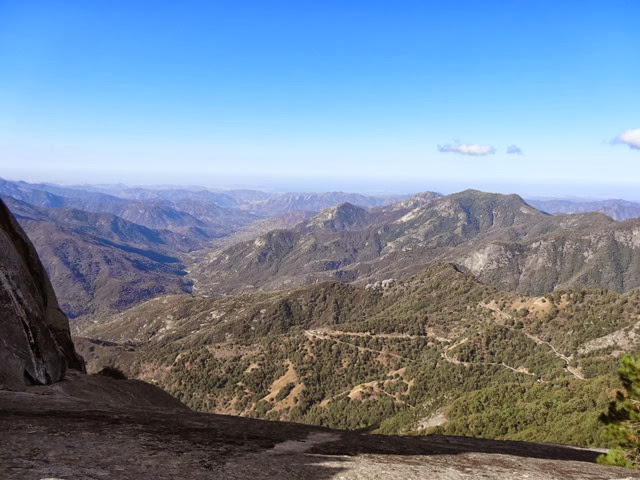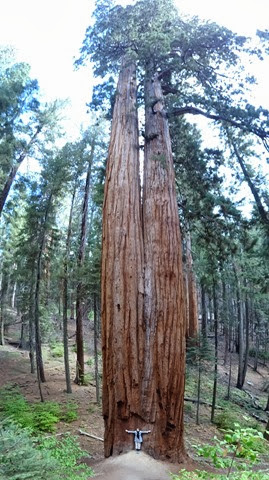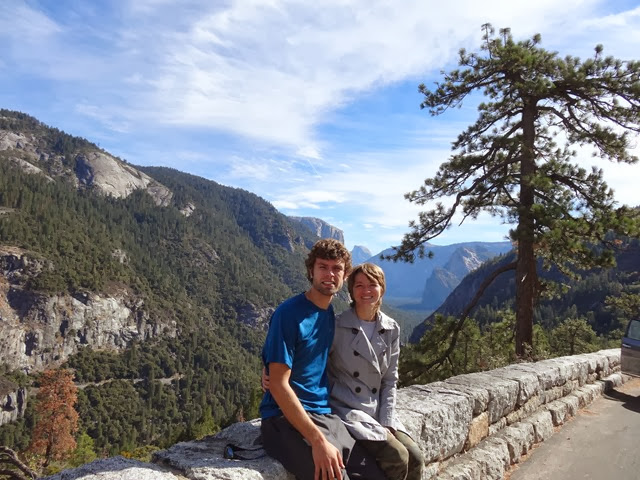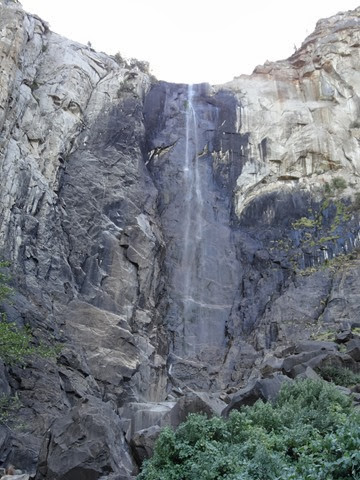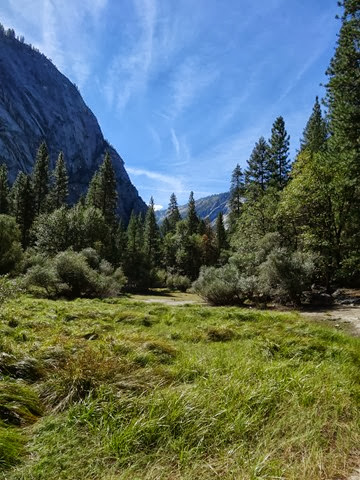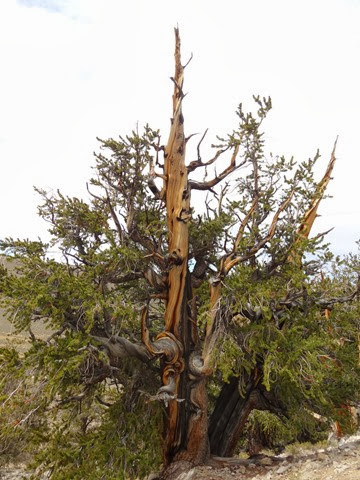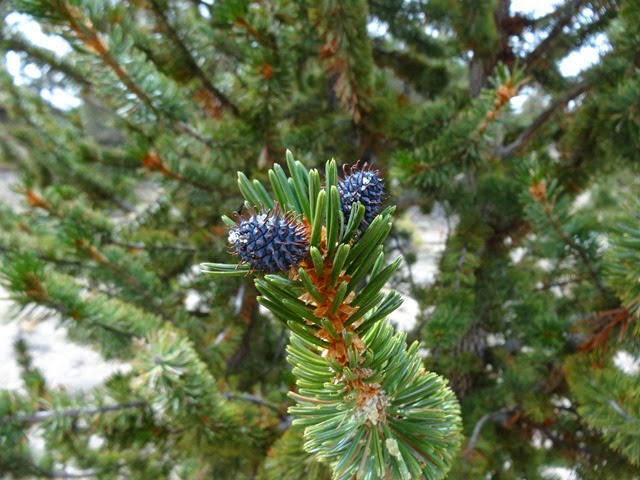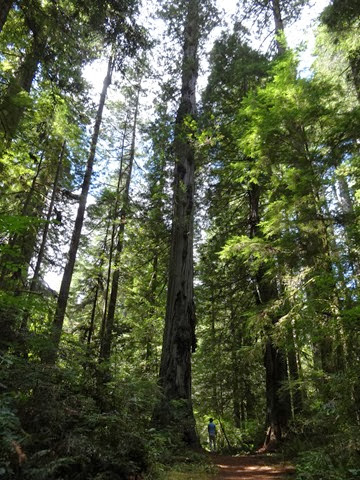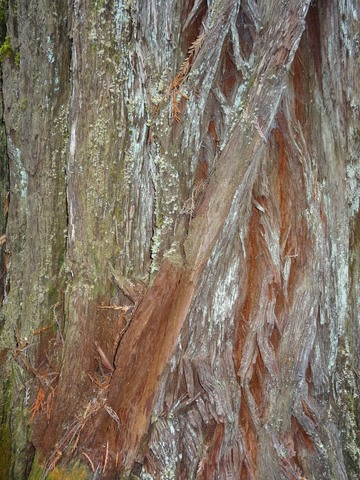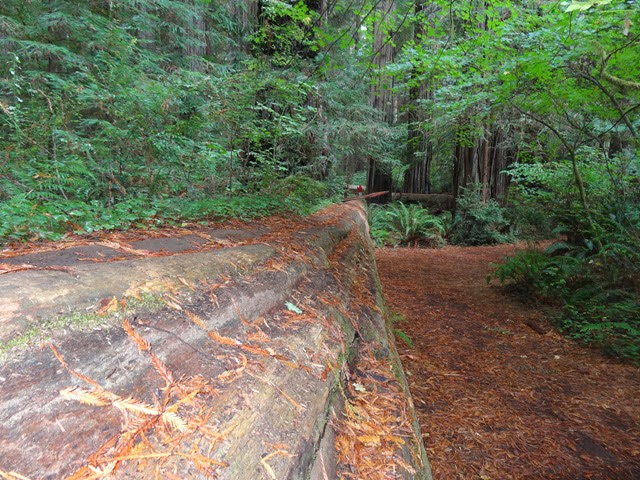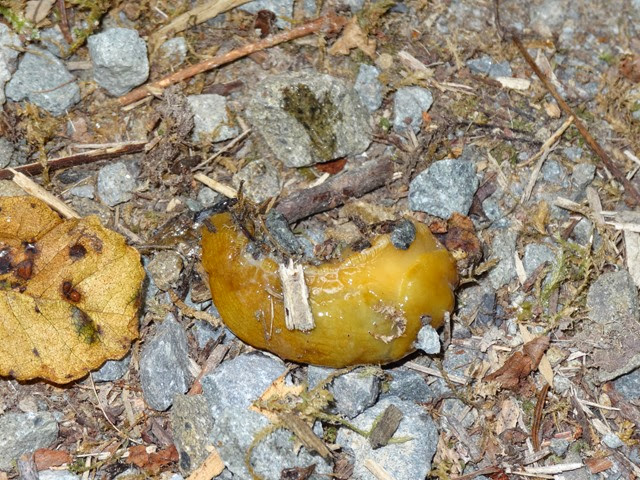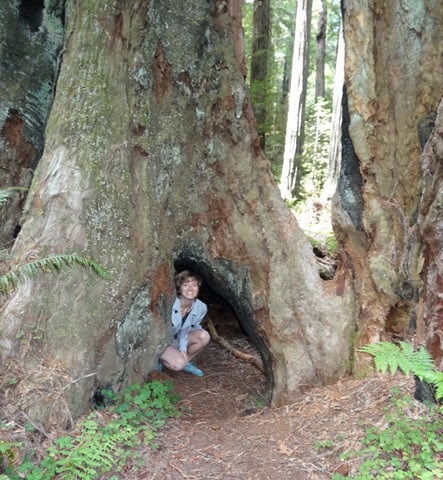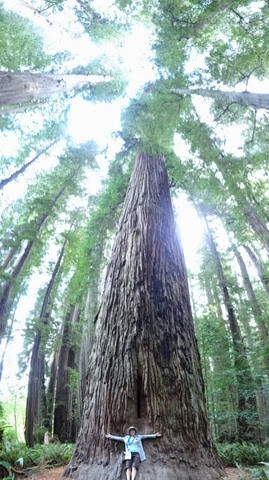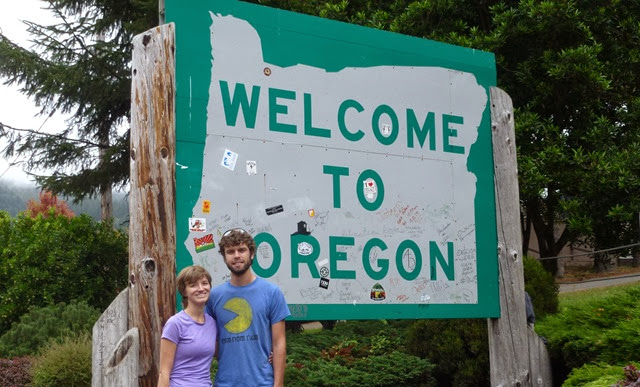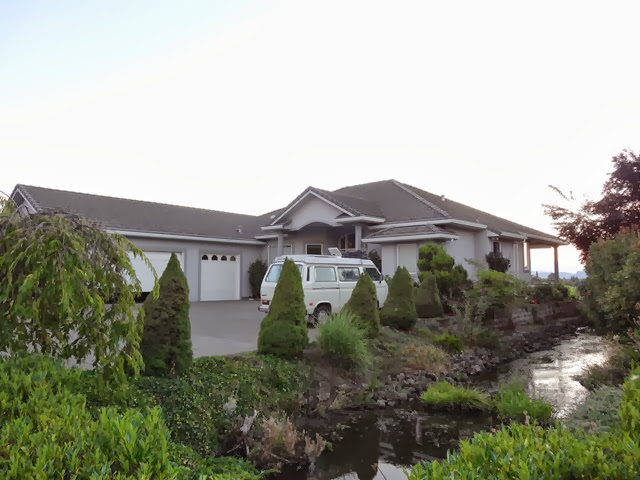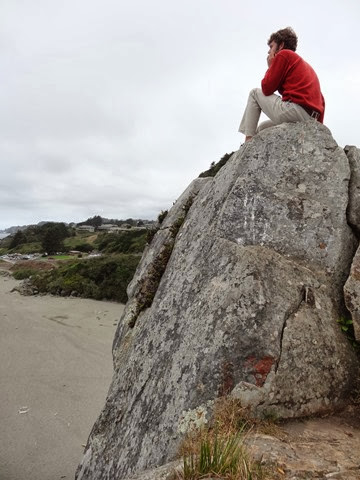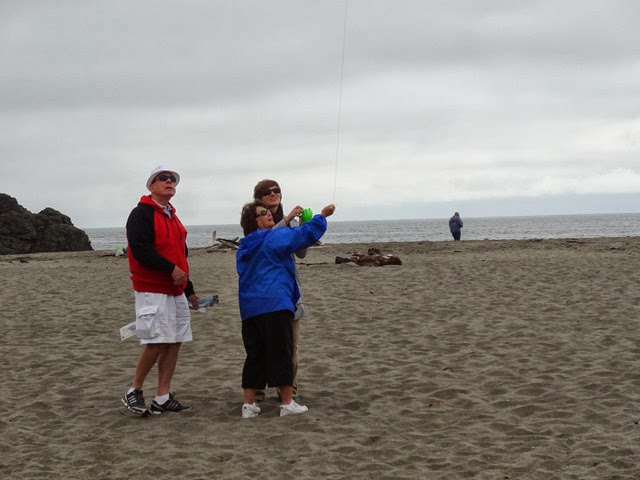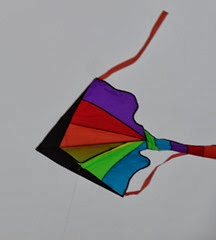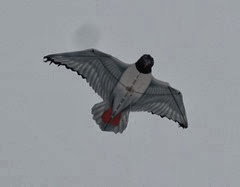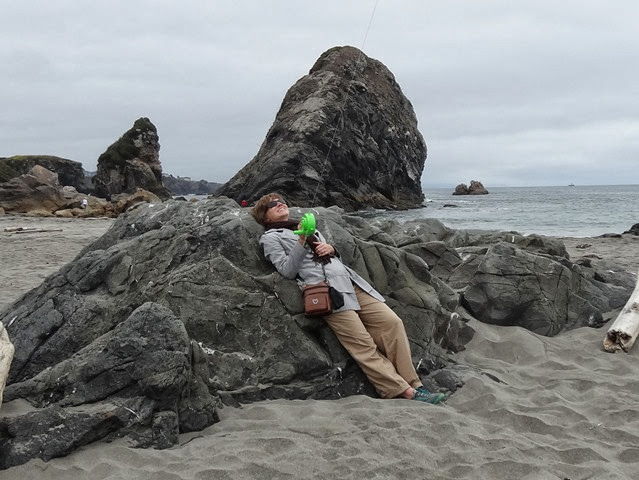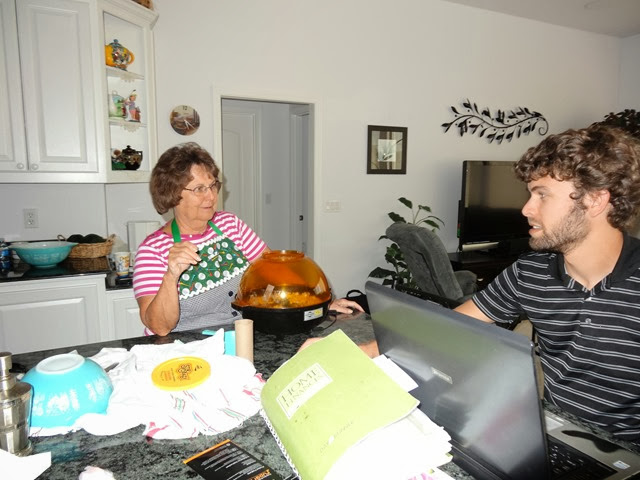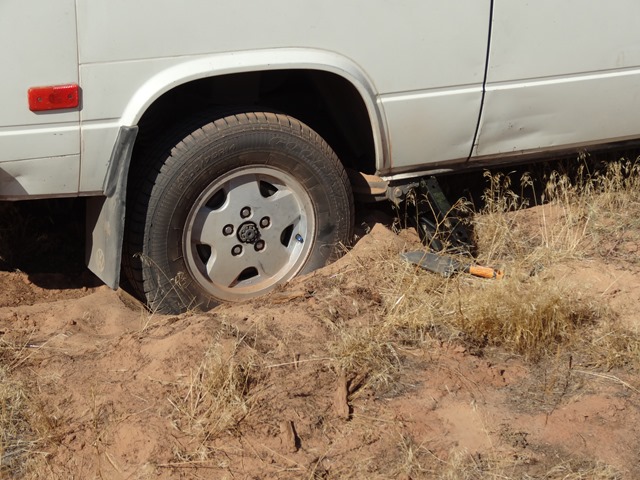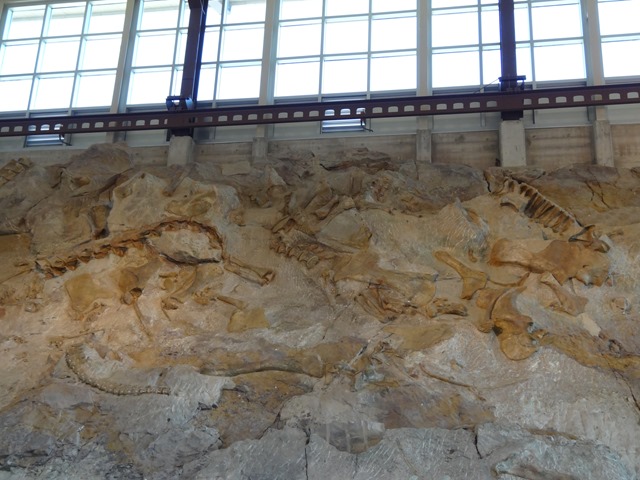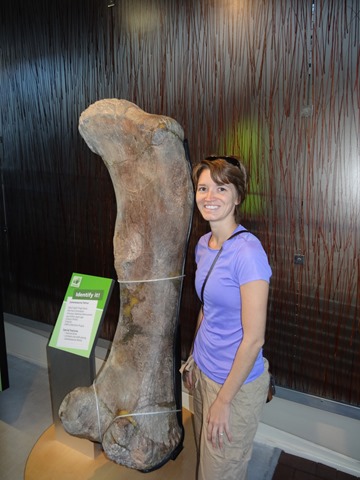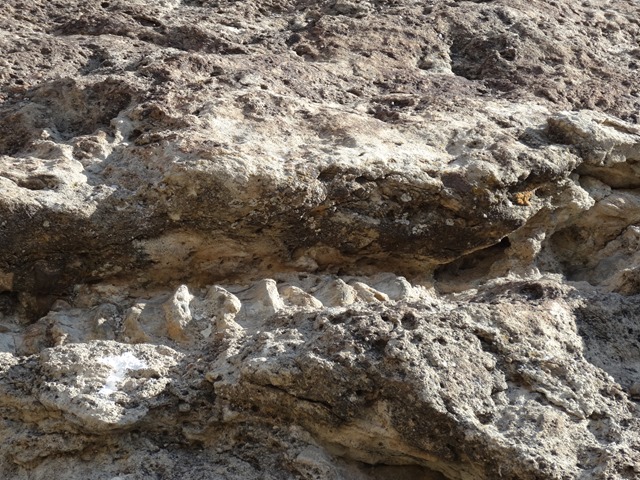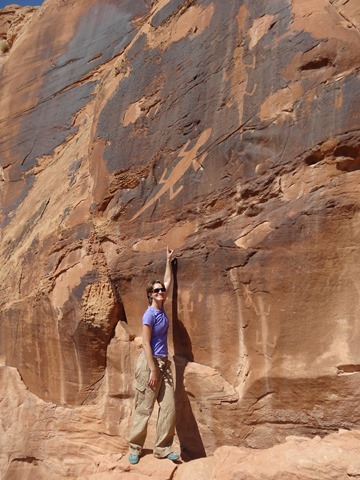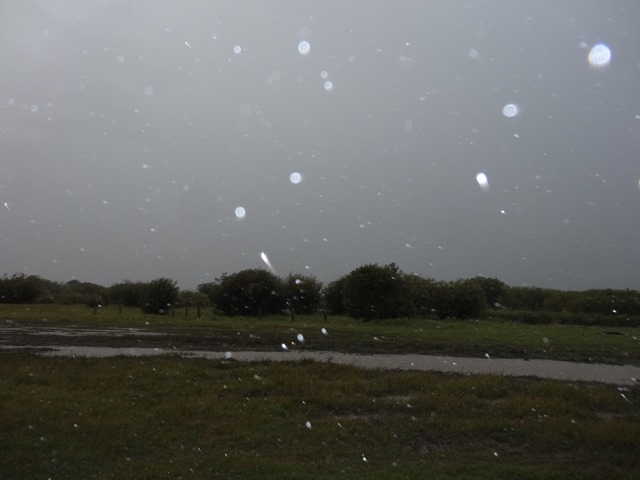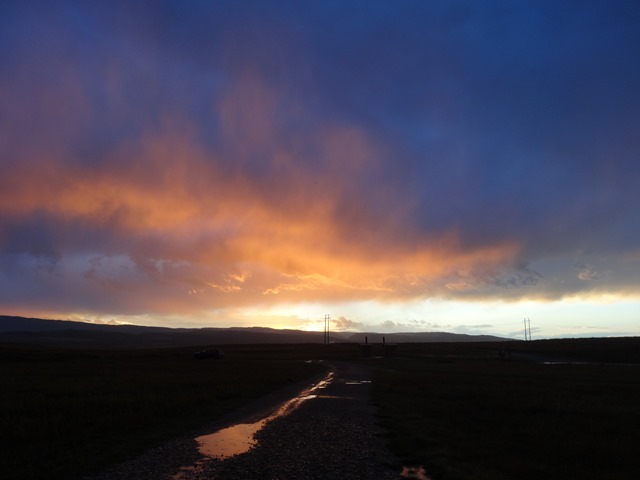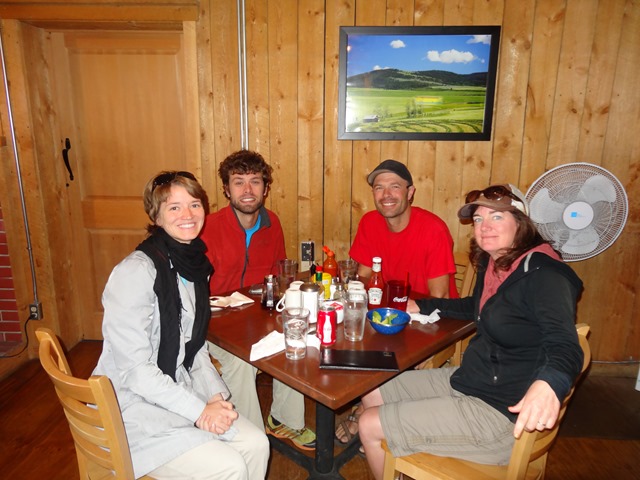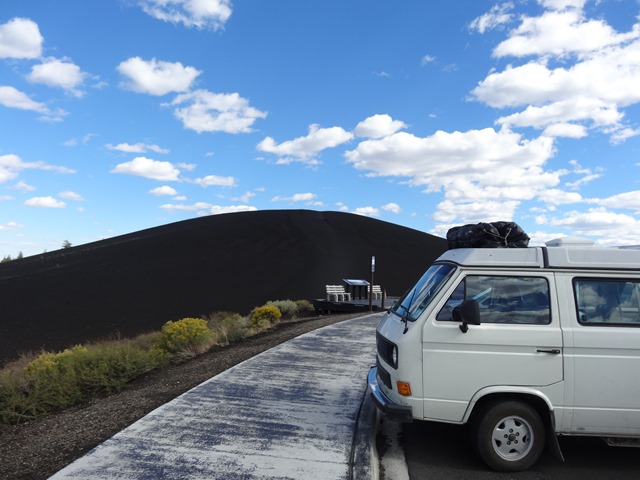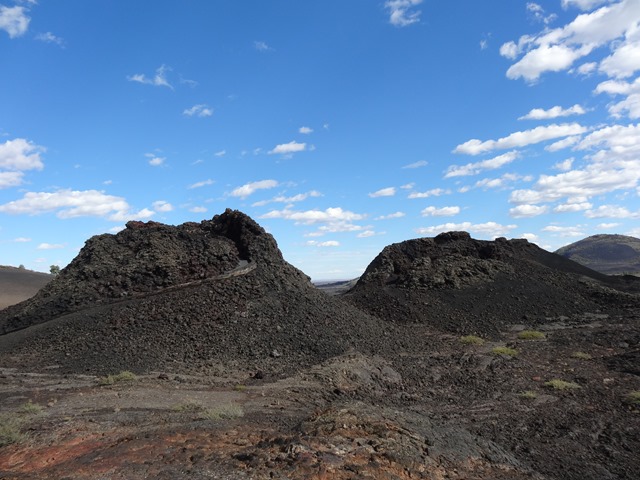San Francisco airport had the best chance of me getting on a flight to get to Kansas to make it to my sister’s and cousin’s bridal showers. So we arranged our travels to make it there by the time that I needed to fly out. We decided to participate as tourists for once and drive over the Golden Gate bridge and visit Fisherman’s Wharf while we were there. We had read online that there was a $6 toll in the southbound direction, so we were prepared to pay. However, as we approached, there was a sign that said no cash. We figured we would then pay with credit card. When we got to the toll booth, there was no attendant or way to pay, so we just drove on through. Apparently, San Franciscans have this “pay by license plate” or something, where you are billed based upon their plates. Maybe we will get a bill in the mail?
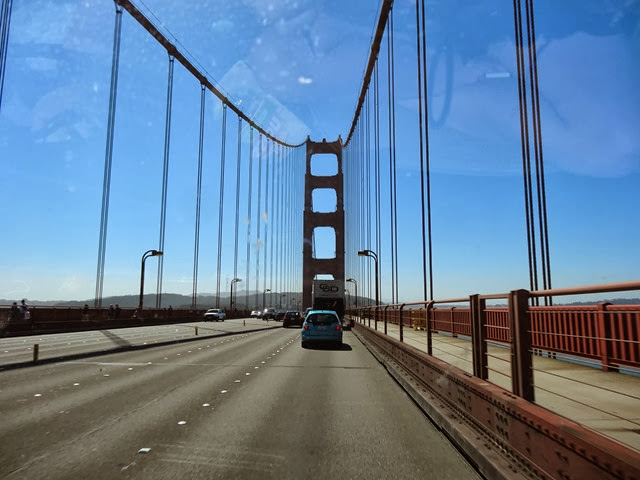
Then we made our way to Fisherman’s Wharf. As we progressed closer to our destination, we figured parking would be difficult to find. We did finally find a spot on the road and scrounged up enough coins to purchase an hour’s worth of parking. It happened to be about lunchtime so we decided we would find lunch and get back, having completed the task of visiting the wharf.
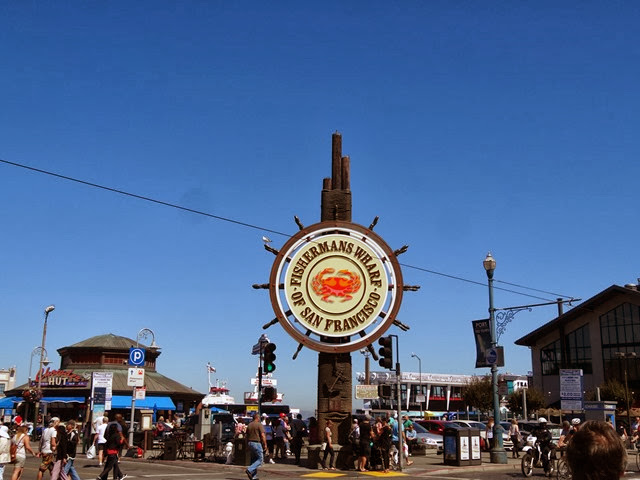
Walking about looking for a place to eat, we realized that America’s Cup Finals were being held in San Francisco this weekend. In the bay, we could see sail boats sliding by, showing off before the race. One of the boats offering rides to watch the Cup was the “Lovely Martha.” Jonathan’s grandma, Martha, has been watching this boat since she was a young woman. In fact, on one of Fred & Martha’s first dates, she took him to see it and next to it was the “Captain Fred.” Oh, the ironies of life! Sadly, this time it was Captain Chris that was next door.
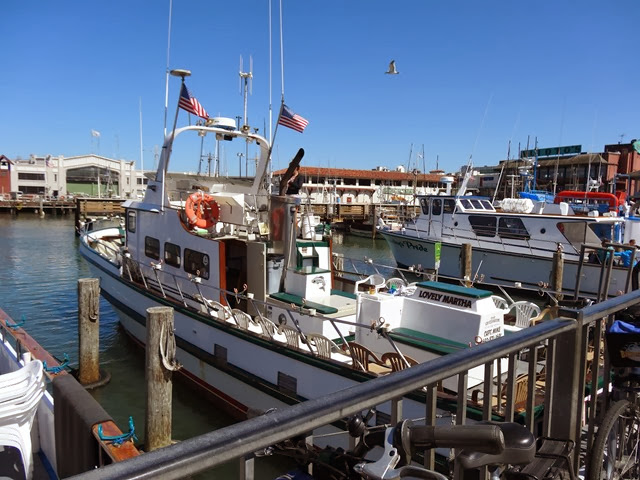
We decided on Alioto’s for lunch. It is the oldest restaurant on the wharf, and they were offering cheaper lunch specials from their second story with views of the bay. Jonathan got the fish and chips and I the tortellini with tomato cream sauce. Both were excellent. The fish had such a great flavor; I was impressed.
We made it back to our van just in time and made our way back out of the city in search of a reasonably-priced campground. We made our way along the coast to a campground that I had found whose prices I thought would be $10. When we got there, we were going to be charged a minimum of $30. So, we decided to drive on for another 45 minutes to the next campground, which definitely offered $12 tent camping. We got settled in for the evening, and then during dinner, a ranger came up and told us we were in the wrong area. Then he asked if we had bought camping for an RV. I said no, that we considered ourselves a tent. He said that we needed to purchase the RV permit for $30 and call the number on the kiosk during business hours to get a refund on our tent permit. Frustrated with the fact that we would have to pay so much more and we were only going to be there until 3:30am, we decided to leave and find a Walmart. When we got cell reception, we discovered that California cities don’t permit overnight parking in their Walmart parking lots, so we searched for a rest area. Jonathan found us one a lot closer to the airport, which was a plus.
My flight left at 5:50am, so I needed to be there at 4:50am, so we were up at 4:15am. I did catch both of my flights. My dependable brother had arranged for a vehicle to be in the parking lot for me to take when I arrived. So that weekend, I got go to my cousin’s shower on Saturday and my sister’s shower on Sunday. I had a ton of fun, while Jonathan got to entertain himself in the California wilderness by himself for 4 days.
California’s living expenses are frightful. Gas is about a full dollar more expensive than the Midwest prices. Food prices are exorbitant. For example, we needed groceries and couldn’t find a Walmart. The prices were high: a pound of chuck roast was $10, a large can of parmesan was $9. Then to top it off, free campsites are few and far between. Most of the campgrounds in California, especially state parks, charge $30 for dry-camping! You may get flush toilets for that price. Ridiculous. This has definitely made us want to limit our time here.
I had heard that Big Sur area along Ca-1 is one of the most scenic drives and Jonathan had heard that Montana de Oro State Park was pretty great. Since we were already so far west and south in California, I figured we might as well as hit up those spots now, despite our desire to get out of California as soon as possible. When I was reunited with my husband Monday morning, we made our way south along the coast again. I guess I must have just been spoiled with my other travels, as I did not find the scenery very enticing. Maybe it was just the wrong time of year—it was really dry and everything was dead.
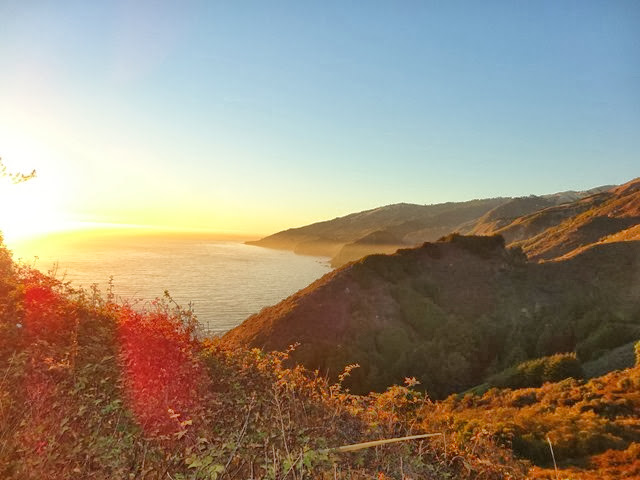
We did continue on to Montaña de Oro State Park. While camping costs are extravagant in California, at least day use fees are nonexistent. On our way to enjoy the park, we came across a colony or two of elephant seals. They were quite entertaining to watch as they slept and played.
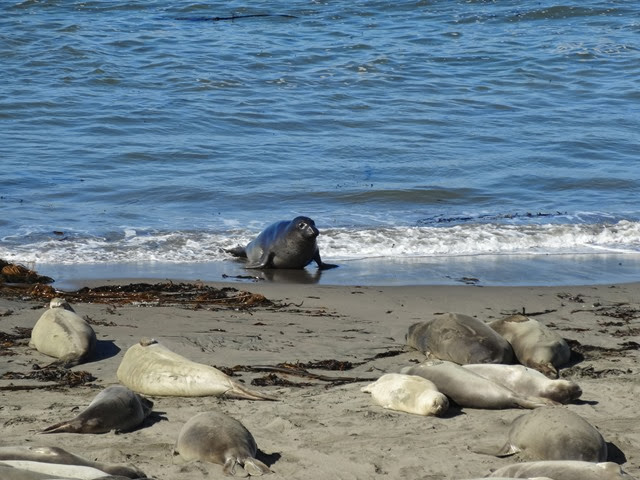
After the elephant seals, we were thinking of checking out Hearst Castle, since someone had recommended it to me. However, when we got there, we discovered it was $25pp entrance fee, and we weren’t interested enough to pay that much. But, as we pulled away on the highway, there were zebras grazing in a pasture. Must have been a Hearst purchase…
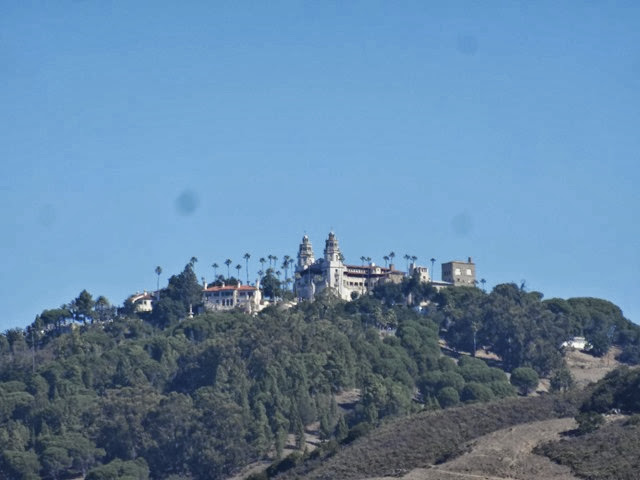 Hearst Castle.
Hearst Castle.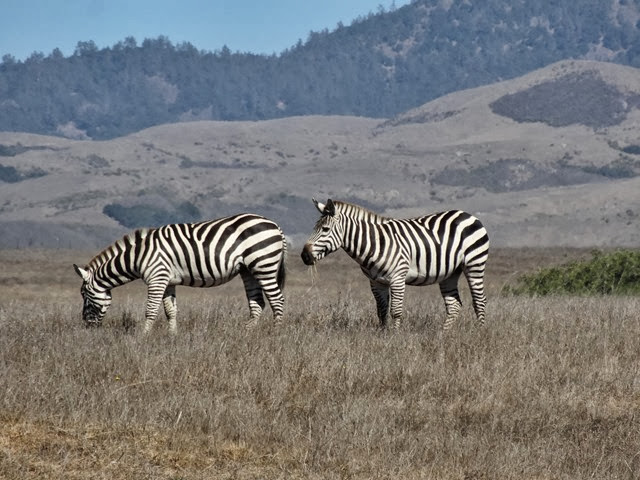 Seeing elephant seals and zebras in one day outside of a zoo is not a bad day.
Seeing elephant seals and zebras in one day outside of a zoo is not a bad day. After lunching and a brief walk on one of the trails at Montaña de Oro State Park, we left the west coast for the interior, with Sequoia, Kings Canyon, and Yosemite National Parks in mind.
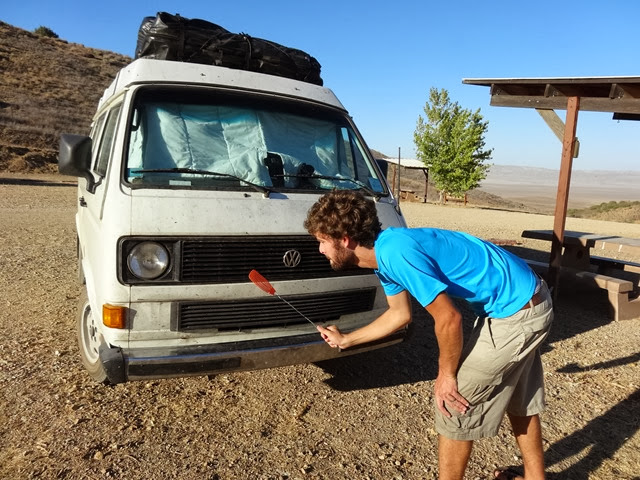 Jonathan on a fly killing spree at our campsite that night. He took out well over 150 flies.
Jonathan on a fly killing spree at our campsite that night. He took out well over 150 flies.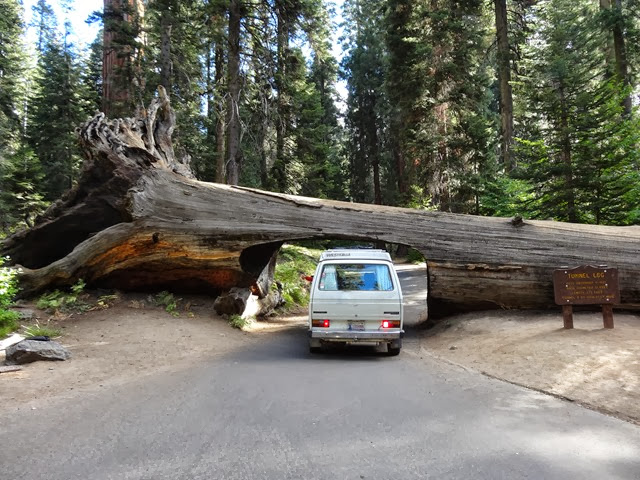
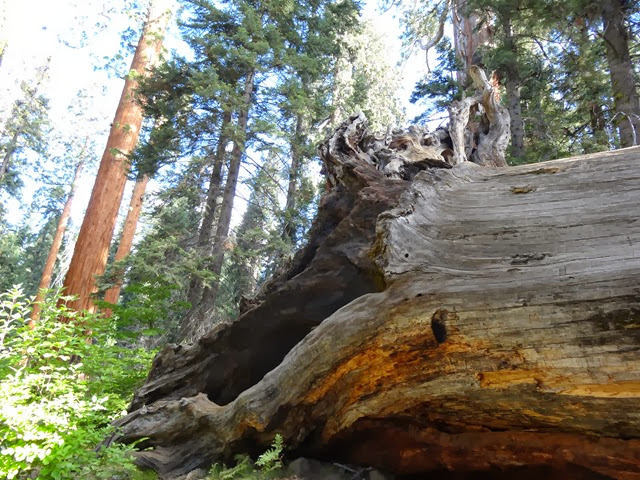
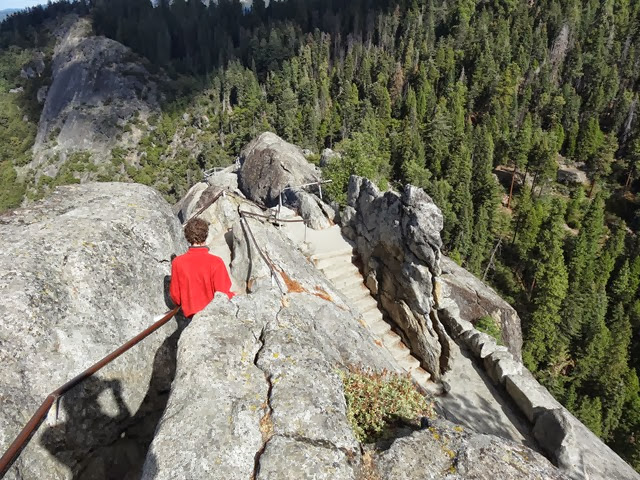
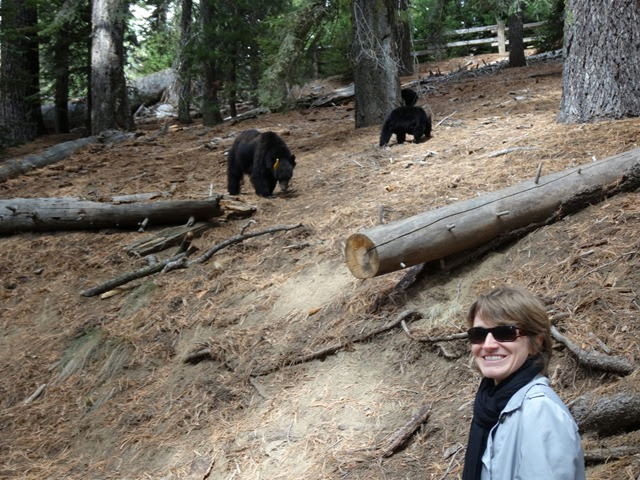
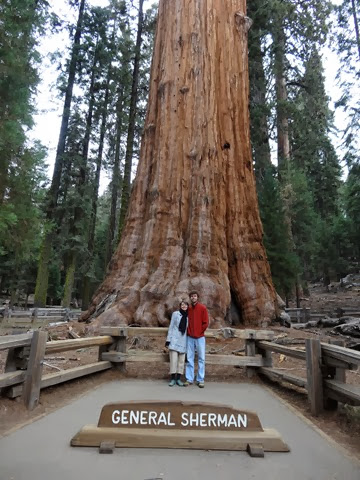
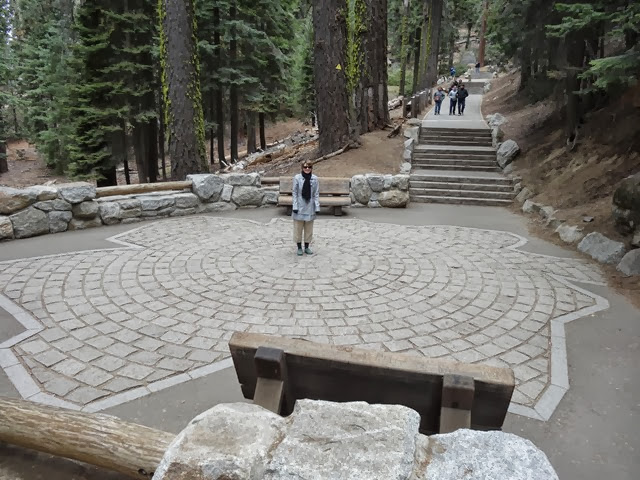 This is an outline of General Sherman’s base. He no longer grows any taller, but each year he grows another thin layer of bark, which is the equivalent mass of another small tree.
This is an outline of General Sherman’s base. He no longer grows any taller, but each year he grows another thin layer of bark, which is the equivalent mass of another small tree.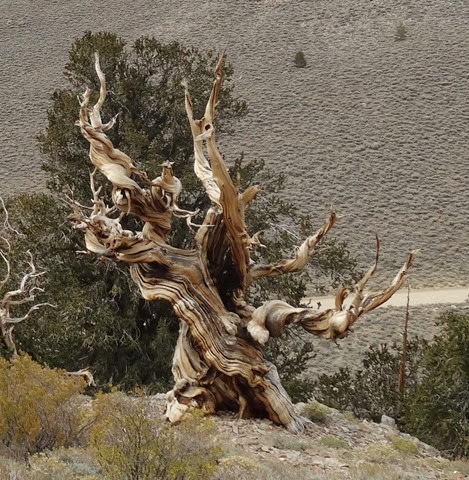 Their skeletons of hardwood last for centuries as well. Look at the curving, whimsical beauty of this guy!
Their skeletons of hardwood last for centuries as well. Look at the curving, whimsical beauty of this guy!